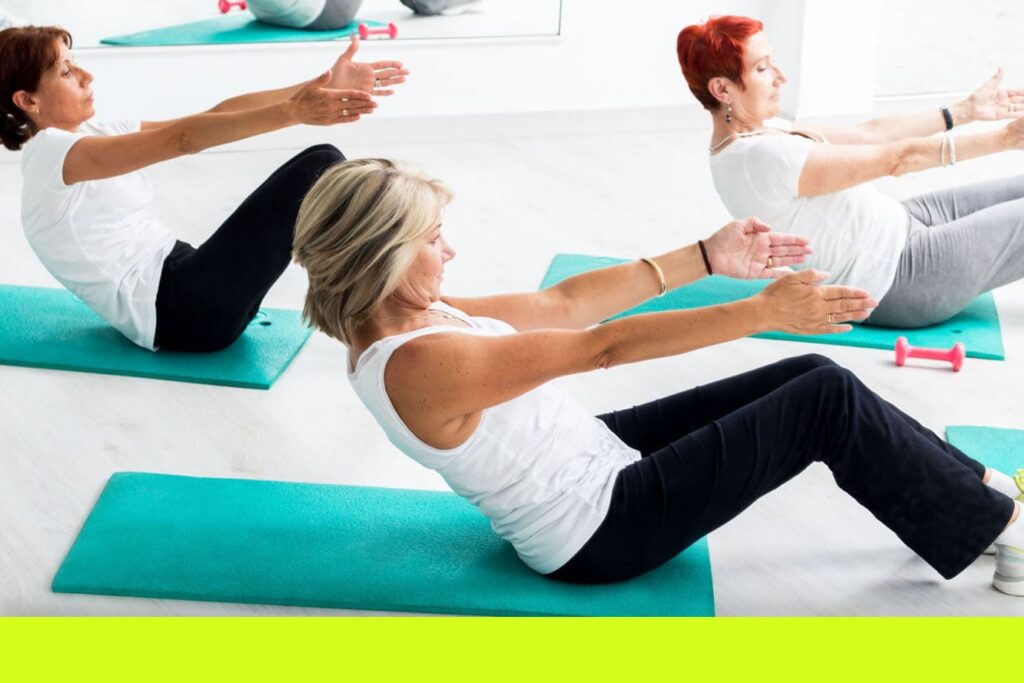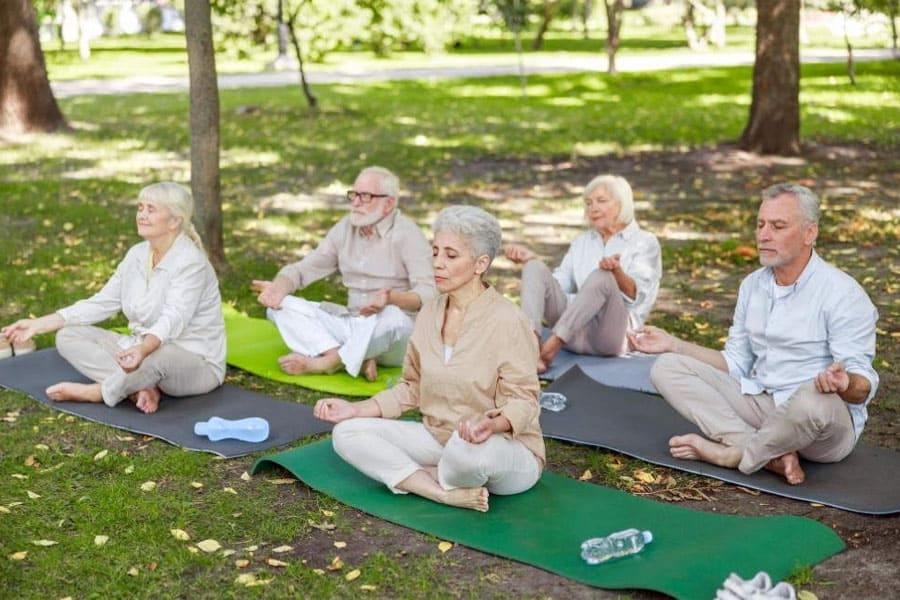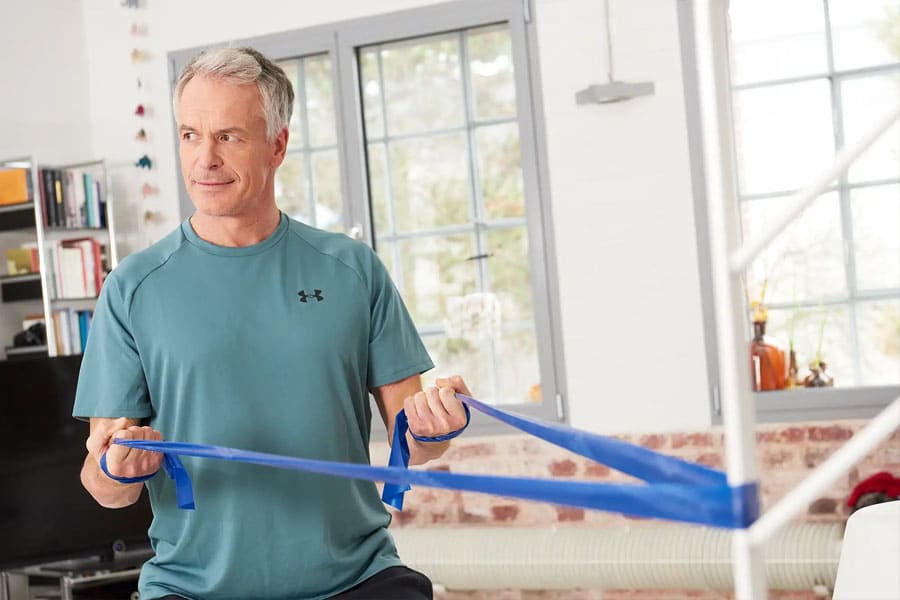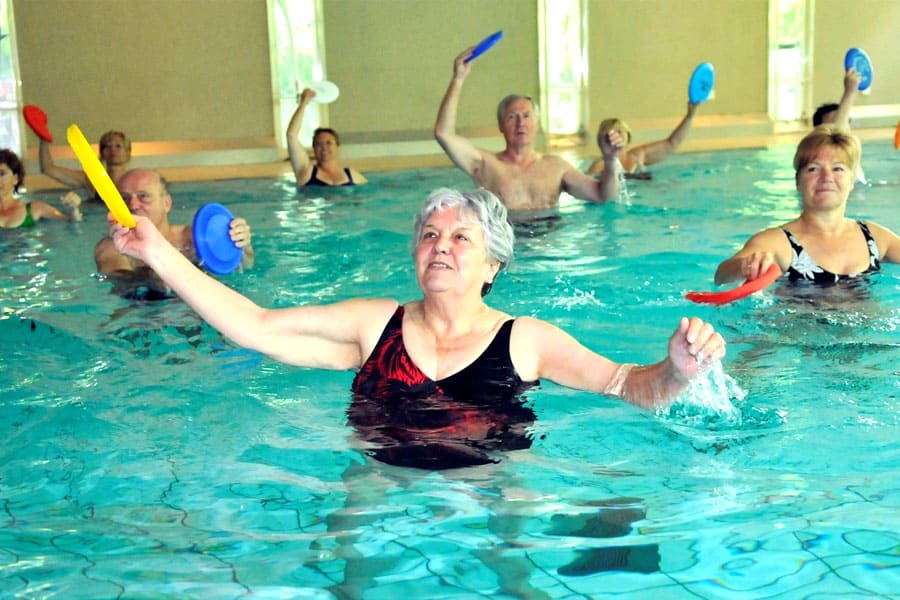
Sports aids: how older people can exercise more easily
Muscle training
Strength decreases with age if we do nothing: starting at age 30, every person loses up to 1 percent of their muscle mass. At age 80, only half of the original strength remains; at age 100, only a third of this remains.
The result: many older people suffer from complaints that can be attributed, for example, to muscle atrophy – back pain, knee pain and general difficulty walking, lifting weights and climbing stairs.
Our muscle mass not only bears the load, but is also actively involved in metabolic processes. Experts now know that the activity of our muscles affects the production of a number of hormones. Strong muscles can therefore indirectly contribute to cardiovascular health and improved mental performance. This makes it even more important that we continue to train our muscles even in old age. But what is the best way to achieve this?
1. Yoga
All you need to start doing yoga is a mat and comfortable clothes. Important: do not start alone, but seek professional help to teach you the correct breathing technique and appropriate exercises (asanas) for beginners, for example in a yoga class.
More experienced people can practice at home or use books and videos as instructions. Accessories such as a yoga block or a yoga bolster can make the exercises easier or more difficult depending on how they are used.


2. Fitness bands
Elastic bands are available in different strengths, meaning that they can be stretched with more or less force. In principle, many muscle groups that are traditionally trained with dumbbells can also be strengthened with fitness bands. This includes: biceps,
chest muscles and triceps.
The advantage of resistance bands: if you apply controlled and even force, the risk of injury is lower than if you handle the weights uncontrollably.
3. Aqua gymnastics
Here, water creates resistance that trains muscles even with simple movements, such as running in place. However, you can make your workouts truly effective with simple devices that provide buoyancy: kickboards, noodles or water dumbbells.

What are the benefits of strength training in old age?
If you have retired from a sedentary job without paying enough attention to your muscles, you may wonder if it is too late. As numerous medical studies show, the answer to this question is a clear “No”.
According to this study, even people over 60 can achieve significant increases in muscle strength and build muscle mass if they train for 20-30 minutes two to three times a week. Positive side effects: Reduced risk of cardiovascular disease, diabetes, cancer, and osteoporosis. In addition, muscle training is considered an effective treatment for age-related muscle wasting (sarcopenia).
